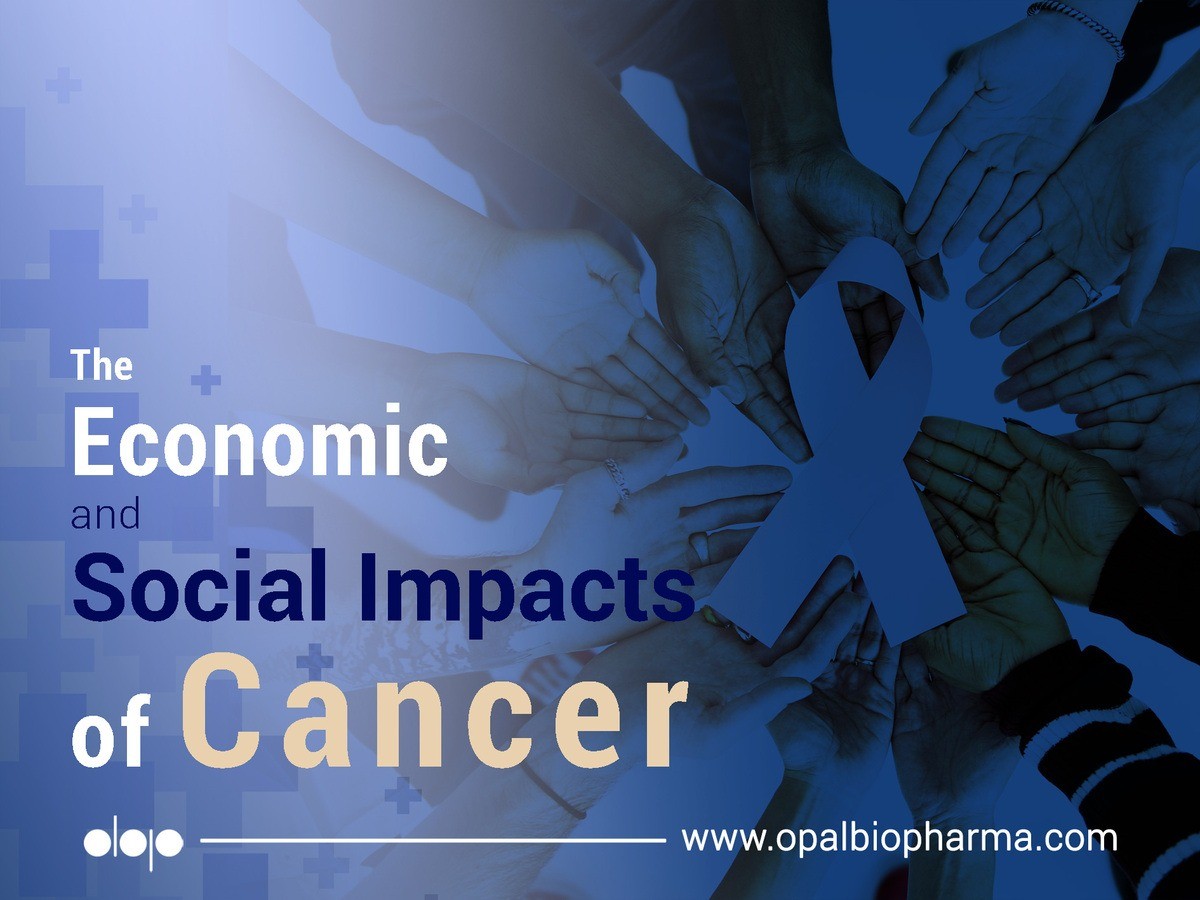Introduction
Cancer remains one of the most formidable challenges in global health, presenting significant economic and social burdens as we talk about them in this article under the name “The Economic and Social Impacts of Cancer”. In 2023, the disease continues to exert a profound impact, not just in terms of the number of lives it affects but also through its substantial economic implications. With direct medical costs in the United States estimated at nearly $209 billion in 2020 and a projected global economic cost of $25.2 trillion from 2020 to 2050, the financial implications are staggering. Beyond the economic aspect, cancer also brings about deep social consequences, affecting the mental health, social dynamics, and overall quality of life for patients and their families. This article aims to explore the multifaceted economic and social impacts of cancer, delving into the latest updates and perspectives. Through a comprehensive examination, we aim to provide a thorough understanding of how cancer continues to influence societies and economies around the world.
The Economic Burden of Cancer
In the topic of talking about the economic and social effects of cancer, let’s point out the economic burden of cancer first. This includes direct medical costs like hospital stays, treatments, and medications, which can be exorbitant and strain healthcare systems. Additionally, indirect costs such as lost productivity and income due to illness or caregiving responsibilities significantly impact both individuals and economies. Furthermore, cancer often leads to long-term economic challenges for patients and families, ranging from decreased earning capacity to increased out-of-pocket expenses. This financial strain can exacerbate social inequalities, as those with fewer resources may struggle to access quality care or support services.
Direct Costs of Cancer Care
Cancer’s direct medical costs are staggering. In the United States, these costs reached nearly $209 billion in 2020. This figure encapsulates the expenses related to hospital stays, doctor visits, medication, and increasingly sophisticated treatment methods. These costs reflect not only the advancements in medical technology and treatment options but also the growing prevalence of cancer diagnoses. The financial strain of these costs extends beyond health systems to individual patients, often leading to significant economic hardship.
Global Economic Impact
The global economic impact of cancer is even more profound. An analysis predicts a cumulative cost of $25.2 trillion from 2020 to 2050. This staggering amount is attributed to the direct medical costs, lost productivity, and the broader societal impacts of cancer. This figure underscores the need for global initiatives focusing on cancer prevention, early detection, and cost-effective treatment strategies to mitigate these economic repercussions.
Individual and Family Economic Strain
For individuals and families, a cancer diagnosis often translates into a significant financial burden. The costs associated with treatment, such as medications, travel for care, and lost income due to the inability to work, can be overwhelming. This economic strain is compounded in systems where healthcare is not fully public, requiring families to bear a larger share of the treatment costs. The financial impact extends beyond the immediate period of treatment, often affecting families’ long-term financial stability and quality of life.
Vulnerable Populations and Economic Hardship
The economic hardship of cancer disproportionately affects vulnerable populations. Factors such as socioeconomic status, geographic location, and income level play a crucial role in determining the financial impact on these groups. Individuals from lower-income families or remote areas often face greater challenges in accessing and affording care, leading to disparities in cancer outcomes. These groups are more likely to experience delayed diagnoses and have limited access to advanced treatment options, further exacerbating the economic and health disparities.
Patient Out-of-Pocket and Time Costs
The personal financial cost of cancer care is substantial. In 2019, U.S. cancer patients shouldered $21.09 billion in out-of-pocket and time costs. These expenses include not only direct medical costs but also non-medical costs like transportation, caregiving, and lost time from work. This financial burden can lead to “financial toxicity,” where the cost of treatment causes significant distress and impacts patients’ decisions regarding their care. The concept of financial toxicity highlights the need for more affordable cancer care and better financial support systems for patients.
The Social Impact of Cancer
In the following discussion about the economic and social effects of cancer, we get to the social impact of cancer. Cancer not only affects patients physically but also has profound emotional and psychological consequences. It often leads to social isolation, as patients may be unable to participate in regular activities or work, affecting their social relationships and community involvement. The stigma associated with cancer can further exacerbate this isolation. Families and caregivers also face significant stress and emotional burdens, which can strain relationships and lead to broader social issues. Moreover, disparities in cancer care access and outcomes highlight broader societal inequalities, underscoring the need for more equitable healthcare solutions.
Psychological and Emotional Effects
The psychological and emotional toll of cancer is as significant as its physical impact. Patients often experience anxiety, depression, and emotional distress following a diagnosis. These feelings can stem from concerns about the prognosis, the side effects of treatment, changes in physical appearance, and the fear of recurrence. Family members and caregivers also face emotional challenges, balancing their mental well-being with the demands of providing support. The emotional impact of cancer highlights the need for comprehensive care that includes psychological support and counseling services for patients and their families.
Impact on Work and Productivity
Cancer significantly impacts patients’ work and overall productivity. Many patients have to reduce their work hours or stop working altogether, leading to lost income and career opportunities. Employers also bear the cost in terms of lost productivity and the need to accommodate or replace employees undergoing treatment. This disruption extends beyond the individual, affecting entire industries and economies, particularly in sectors where skilled labor is essential. Supportive workplace policies and flexible work arrangements can play a crucial role in mitigating these impacts.
Social Stigma and Isolation
Cancer patients often face social stigma and isolation stemming from misconceptions about the disease. This stigma can lead to social withdrawal, affecting patients’ quality of life and mental health. In some cultures, cancer is still considered a taboo topic, making it difficult for patients to seek support and openly discuss their experiences. Addressing this stigma through public education and awareness campaigns is crucial to improving the social environment for cancer patients and encouraging a more supportive and understanding community.
Support Systems and Community Role
The role of support systems in mitigating the social impact of cancer cannot be overstated. Support from family, friends, healthcare providers, and community organizations is essential for patients’ emotional well-being and recovery. Community-based support groups and organizations provide a platform for sharing experiences, offering emotional support, and disseminating information about resources and coping strategies. These networks play a crucial role in reducing feelings of isolation and providing practical assistance to patients and their families.
Advances in Treatment and Social Awareness
Recent advances in cancer treatment have significantly improved survival rates and quality of life for patients. These advancements have also played a role in increasing social awareness and support for cancer patients. Public campaigns, celebrity involvement, and media coverage of breakthrough treatments have contributed to a more open dialogue about cancer. This increased awareness has led to greater empathy and understanding, reducing stigma and encouraging community involvement in supporting cancer research and patient care.
Conclusion
The article “The Economic and Social Impacts of Cancer” has explored the multifaceted economic and social impacts of cancer, highlighting the significant financial burden and the profound effects on individuals, families, and societies. The high costs of treatment, the emotional and psychological toll, and the broader societal repercussions underscore the urgent need for comprehensive strategies to address these challenges. Continued research, improved access to affordable care, and increased social support are essential in mitigating these impacts. As we advance in medical science, the role of companies like Opal Bio Pharma (OBP), striving to contribute to the global fight against cancer, becomes increasingly vital. OBP’s efforts in developing vaccines and therapies represent a beacon of hope and progress, particularly for regions like Central and Eastern Europe. As OBP raises the flag of Oman in the medical industry, it exemplifies the global collaboration needed to tackle the ongoing challenges posed by cancer.

